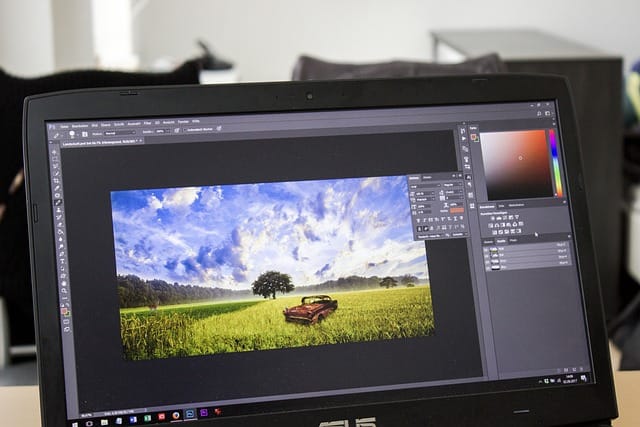In the realm of photography, capturing the perfect image is only part of the journey. The true magic often happens in the editing room, where raw photographs are transformed into stunning visual masterpieces. Edit photos using Adobe Lightroom has become a vital skill for photographers of all levels, enabling them to enhance their work, express their creativity, and present their artistic vision. This powerful software is designed specifically for photographers, offering a comprehensive suite of tools that allows users to adjust exposure, color balance, and various other elements of their images.
Edit photos using Adobe Lightroom is more than just a photo editor; it is a complete workflow solution that helps you manage your photo library while providing advanced editing capabilities. From organizing your files to applying intricate edits, Lightroom empowers photographers to bring out the best in their images. Its user-friendly interface simplifies the process, making it accessible to beginners while still offering the depth needed for professionals.
As we delve deeper into this guide, we will explore the essential features and tools available in Adobe Lightroom. You’ll learn how to import and organize your images effectively, utilize the various editing tools, and apply advanced techniques to achieve a polished look. We’ll also discuss how to create presets, work with color grading, and the importance of exporting your images correctly. By the end of this guide, you will be well-equipped to edit photos using Adobe Lightroom, whether you’re editing family photos, landscapes, or professional portraits.
Let’s embark on this journey of photographic enhancement, discovering how to edit photos using Adobe Lightroom to create images that captivate and inspire.
Understanding Adobe Lightroom
Before diving into the editing process, it’s essential to understand the capabilities of Adobe Lightroom. This software is structured to accommodate various aspects of photo management and editing, ensuring that you have everything you need at your fingertips. To effectively edit photos using Adobe Lightroom, you first need to become familiar with its interface and workflow.
The Lightroom Interface
Upon launching Adobe Lightroom, you will encounter a clean, organized interface. The main components of Lightroom are divided into several modules, each designed for a specific function:
Library Module: This is where you can import, organize, and manage your photo collections. It allows you to rate, flag, and categorize your images, which is crucial when you begin to edit photos using Adobe Lightroom efficiently.
Develop Module: This is where the editing magic happens. Here, you can adjust exposure, contrast, color, and apply various effects to enhance your images. Understanding how to edit photos using Adobe Lightroom in the Develop module is key to mastering the software.
Map Module: If you’re a travel photographer, this module allows you to geotag your images based on the locations where they were taken, enhancing the ability to edit photos using Adobe Lightroom with location-specific data.
Book Module: This module helps you create photo books from your images, making it useful for organizing edited images into professional albums after you edit photos using Adobe Lightroom.
Slideshow Module: You can create slideshows from your images, complete with music and transitions. After you edit photos using Adobe Lightroom, presenting them in a slideshow can add another layer of professionalism to your work.
Print Module: This module allows you to prepare your photos for printing, ensuring they look their best on paper. After you edit photos using Adobe Lightroom, printing them correctly is a vital final step.
Web Module: If you want to create web galleries, this module offers templates and options for displaying your images online. This can be particularly useful after you edit photos using Adobe Lightroom and are ready to showcase them to a broader audience.
Each module plays a crucial role in the overall workflow, making Lightroom a versatile tool for photographers who want to edit photos using Adobe Lightroom effectively.
Importing Your Images
The first step in editing photos using Adobe Lightroom is importing your images. This process is straightforward and crucial for maintaining an organized library when you want to edit photos using Adobe Lightroom.
- Open Lightroom: Start the application and navigate to the Library module.
- Click Import: This button is located in the lower-left corner of the interface.
- Select Your Source: Choose the location of your images. This could be your computer, an external hard drive, or a memory card.
- Select Your Images: Browse through the available images and select the ones you wish to import. You can choose specific photos or select entire folders.
- Destination Folder: Decide where you want to store the imported images on your computer.
- Apply Metadata and Keywords: Before finalizing the import, you can add metadata and keywords to your images, which will help with organization and searching later on.
Click Import: Once you have made your selections, click the import button to add your images to the Lightroom library, setting the foundation to edit photos using Adobe Lightroom.
Organizing Your Photos
After importing your images, keeping them organized is essential. Lightroom provides several features that facilitate effective organization when you edit photos using Adobe Lightroom:
Collections: Collections are a powerful way to group related images. You can create smart collections that automatically update based on specified criteria, such as star ratings or keywords, which is highly effective when you want to quickly find and edit photos using Adobe Lightroom.
Folders: Lightroom allows you to manage your files by folder, enabling you to maintain the directory structure of your images. This can help streamline your workflow when you edit photos using Adobe Lightroom.
Keywords: Assigning keywords to your images enhances your ability to find specific photos later. Keywords are indispensable when managing a large library to efficiently edit photos using Adobe Lightroom.
Star Ratings and Flags: Use star ratings to rank your images or apply flags to mark your favorites. This feature helps streamline your workflow, especially when working with a large number of images you want to edit using Adobe Lightroom.
Color Labels: Use color labels to categorize images based on specific projects, editing status, or any criteria that suits your workflow. This tool can help you maintain clarity as you edit photos using Adobe Lightroom.
Basic Editing Techniques in Adobe Lightroom
Once your photos are organized, it’s time to edit photos using Adobe Lightroom with essential editing techniques. These tools form the foundation of image enhancement and allow you to make significant improvements with minimal effort.
Adjusting Exposure
Exposure refers to the brightness of your image. Proper exposure can make or break a photograph. Here’s how to adjust it to edit photos using Adobe Lightroom effectively:
- Select the Image: In the Develop module, select the image you want to edit.
- Basic Panel: Look for the Basic panel on the right side of the interface.
- Adjust Exposure: Use the Exposure slider to increase or decrease the overall brightness of your image. Moving the slider to the right brightens the image, while moving it to the left darkens it.
- Use Histogram: Keep an eye on the histogram, a graphical representation of the tonal values in your image. Aim for a balanced histogram where details are visible in both shadows and highlights.
- Fine-Tune with Shadows and Highlights: Adjust the Shadows slider to bring out details in darker areas and the Highlights slider to recover details in brighter areas.
This is the starting point when you edit photos using Adobe Lightroom, helping you set the overall mood and brightness.
Cropping Your Image
Cropping is an essential part of editing that can dramatically improve your composition when you edit photos using Adobe Lightroom:
- Select the Crop Overlay Tool: In the Develop module, click on the Crop Overlay tool or press the shortcut key (R).
- Drag the Corners: Use the handles on the corners of the crop box to frame your subject better.
- Aspect Ratio: Lightroom allows you to maintain a specific aspect ratio while cropping. You can choose from presets like 1:1, 16:9, or create a custom ratio.
- Apply the Rule of Thirds: Enable the grid overlay to help you position your subject according to the rule of thirds, which is a basic principle of composition.
Adjusting Contrast and Clarity
Contrast and clarity adjustments can add depth and dimension to your images as you edit photos using Adobe Lightroom:
- Contrast Slider: In the Basic panel, find the Contrast slider. Moving it to the right increases the contrast between light and dark areas, making the image pop.
- Clarity Slider: Use the Clarity slider to enhance midtone contrast. This adjustment gives your image a sharper look, making details more pronounced.
Vibrance and Saturation adjustments can further enhance the colors in your images as you edit photos using Adobe Lightroom, helping create visually striking photos.
Advanced Editing Techniques in Adobe Lightroom
Once you’ve mastered the basics, you can begin exploring more advanced techniques to edit photos using Adobe Lightroom and elevate your images to a professional level.
Color Grading
Color grading is a crucial tool for setting the mood and atmosphere in an image. Here’s how to use it effectively to edit photos using Adobe Lightroom:
- Open the Color Grading Panel: In the Develop module, locate the Color Grading panel.
- Adjust Shadows, Midtones, and Highlights: Use the color wheels to manipulate the balance in shadows, midtones, and highlights.
- Fine-Tune the Effect: Adjust the saturation and luminance sliders to refine the look.
Color grading is especially useful in creating cohesive aesthetics across multiple images when you edit photos using Adobe Lightroom.
Using Presets
Presets can save a lot of time and help maintain a consistent style when you edit photos using Adobe Lightroom. Presets are pre-configured adjustments that can be applied with a single click:
- Apply a Preset: In the Preset panel, click on the preset you want to apply.
- Create Your Own Preset: After editing an image, click the “+” icon in the Preset panel to save your current settings as a new preset.
- Share Presets: You can export your presets to share with others or use presets created by other photographers.
Using presets speeds up your workflow while maintaining consistency when you edit photos using Adobe Lightroom.
Exporting Your Edited Photos
After completing the editing process, the final step is exporting your images. Correct export settings ensure your photos look their best across various platforms, whether for print or web display.
- Select Your Image(s): Highlight the photos you want to export.
- Click Export: In the Library or Develop module, click the Export button located in the bottom left corner.
- Choose Export Location: Decide where you want to save the files.
- File Settings: Choose the file type (JPEG, PNG, TIFF), and adjust quality settings based on your needs. For online use, a JPEG at 80-100% quality is usually sufficient, while TIFF files are best for print.
- Resolution: Set the resolution to 300 ppi for prints and 72 ppi for web use.
By mastering this process, you ensure that your edited images are ready for any platform.
Conclusion
Mastering the art of edit photos using Adobe Lightroom opens up endless creative possibilities. From basic adjustments like exposure and contrast to advanced techniques like color grading and preset creation, Lightroom offers a powerful, user-friendly platform for photographers at every level. Whether you are working on personal projects or professional shoots, this comprehensive guide gives you the tools to confidently edit photos using Adobe Lightroom and bring your creative vision to life.






